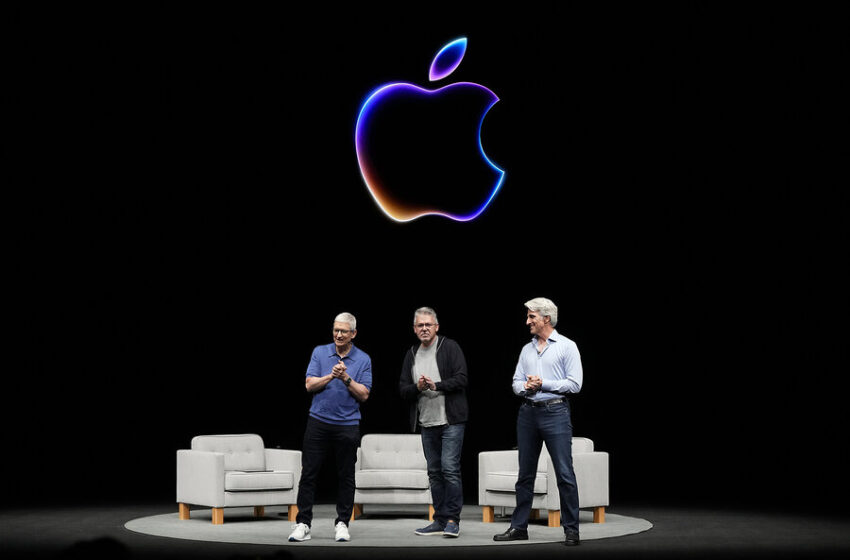
Is Apple’s Relaunch of Siri the Origins of Apple Intelligence?
Apple’s relaunch of Siri, announced at this week’s WWDC, isn’t the same kind of personified AI that Knowledge Navigator promised. But it may be an early stage of a real-world version of that vision.
A video Apple released in 1987 envisioned an “AI future,” with a professor organizing his day and connecting with colleagues using a tablet computer he controlled with voice and gestures. Watch it below.
What is the Knowledge Navigator?
The Knowledge Navigator (or KN) was an envisionment of a personal computer in 1987. It featured a university professor at Berkely juggling his schedule, researching information for a lecture, and even buying a birthday cake for his father. It also highlighted the importance of a high-resolution display, multi-touch screen, and built-in video. It was the first video of its kind, and it led to many questions about what personal computers might look like in the future.
The video is centered around the user Mike Liebhold, an environmental science professor at Berkeley. His interactions with Phil, the computer agent, demonstrate a variety of capabilities, including tracking his schedule, finding articles, and performing simulations. The most interesting aspect of the KN is its ability to share information in ways that are contextually appropriate. For example, when Mike requests a summary of Jill Gilbert and John Fleming’s papers, Phil automatically summarizes them based on the context of the conversation. This contrasts with current technologies where users must explicitly request this type of data sharing.
One of the most important aspects of the KN is its human-like appearance. In the video, Phil is represented by a gray, smiling, and thoughtful character with a bow tie. While some HAT research has found that realistic [18] and gendered anthropomorphic characters can encourage trust, these types of displays also have the potential to be unsettling to users.
What is AI?
AI (artificial intelligence) is a field of computer science that deals with creating intelligent machines. It involves programming computers to learn from data and make decisions on their own that mimic the way humans think, enabling them to perform tasks that require human-level intelligence. The field has seen huge advancements in the past decade, with developments including Apple and Amazon’s Siri and Alexa voice assistants; IBM Watson’s wins on Jeopardy; self-driving cars; Google DeepMind’s AlphaGo defeat of world Go champion Lee Sedol; and more.
Many of the applications of AI are based on machine learning, which is the process of teaching a computer to do something without being told how. This has been the major driver of AI advances, with a wide range of applications in use today, from identifying objects in photographs to interpreting medical images and detecting cancers.
Narrow AI, which is also called weak AI, automates specific tasks and often outperforms humans in a limited context. This includes voice assistants like Siri, image-recognition systems, technologies that respond to simple customer service requests and tools that flag inappropriate content online.
Generative AI, which can create new content in response to a prompt, is becoming more commonplace as well. This type of AI is used by chatbots such as ChatGPT, Gemini and Claude, as well as programs that help programmers write code.
What is Siri?
Siri is a digital assistant that is built into Apple devices like iPhone, iPad and Apple Watch. When activated, it answers questions, performs tasks and makes proactive recommendations on your behalf. It also uses contextual information and rich language understanding to understand what you are asking for.
You can wake Siri up by saying “Hey Siri” to an Apple device and a speech recogniser program will detect these words and convert them into data that the device can understand. Then, it will use a database of known commands to respond to you. The more you use Siri, the better it will get at interpreting your voice and responding to you with the right command.
Another aspect of Siri is that it is always connected to the Internet and unless you have a data plan with a high cap, it will only be able to perform limited requests. Also, if you are using the Siri feature on your iPhone or iPad, it is recommended that you speak clearly and slowly to help ensure accuracy.
Many people have complained about the fact that Siri only comes in a female voice. This can create a stereotype that only women can be personal assistants and helpers and it can also make it seem as if the technology is a person, rather than something that is just part of an ecosystem.
What is Apple Intelligence?
Apple poured a big vat of artificial intelligence over expectant fans this week at WWDC 2024, announcing new features that will make its systems smarter. Its Apple Intelligence brand will put generative AI tools and updates into the core of iPhone, iPad, and Mac devices.
One of the big focuses is on learning personal context, which will let Siri and other apps understand what you’re doing or asking. For example, if you start a conversation with Siri and then open the Notes app and start typing something related to that topic, Apple’s AI will recognize this as additional relevant information. It can also pull information from your email and calendar to better understand what you’re up to.
Other Apple Intelligence features include new writing tools like rewriting, proofreading, and summarization. They will be integrated into iOS and Safari apps, as well as iMessage and Mail. Apple is also adding image generation with “Genmoji” and a new Image Playground. There are also Siri improvements, including the ability to summarize audio recordings and a more natural sounding voice.
Most of the Apple Intelligence features will be processed on-device, so they won’t have to send your data over the Internet. Exceptions will be made for tasks that require more powerful hardware, like the ability to read emails or text in multiple languages. In those cases, the task will run on the company’s private cloud compute servers that are built specifically for these tasks.







